But you, good and loyal readers, do not need to suffer wholly from my prolonged absence: I share with you now my final project for my recently-completed photojournalism course. Lest you think I'm merely a pasty-faced geek who sits in front of a computer monitor all day and makes stories up without benefit of real life experience, I'll have you know that I chronicled the opening of the Forensic Anthropology Center at Texas State University this fall, and accompanied the graduate students on an expedition to a cold case crime scene in rural Falls County where they worked with the Texas Rangers and the Department of Public Safety to recover evidence related to an unsolved murder from the mid-80s. Hardly Hemmingway, I know, but us nerdy types have to take what we can get.
Jerry Melbye, director of the Forensic Anthropology Center at Texas State University, oversees the ribbon-cutting at the new Forensic Research Facility September 26, 2008. The Forensic Research Facility--a 10-acre site located on the sprawling grounds of the 4,000-acre Freeman Ranch at the edge of the Texas Hill Country--is the largest such human research center in the world.
Reporter Andrew McIntosh does a stand-up intro to a news story from an open shallow grave at the Forensic Anthropology Center at Texas State University-San Marcos September 26, 2008.
Information gained from the study of decomposing pig carcasses at the Forensic Research Center at Texas State University-San Marcos will help law enforcement investigations better collect and evaluate information gathered at crime scenes. Photo taken September 26, 2008, San Marcos, Texas.
Texas State University forensic anthropology students excavate a cold case crime scene in Falls County.
A spade marks the location of a human pelvis, discovered by students in the Texas State University forensic anthropology program at a cold case crime scene in Falls County.
Outfitted in protective dry suits, members of the Texas State Department of Public Safety Dive Recovery Team churn through pond mud looking for human remains at a cold case crime scene in Fall County.
Kristina Gavit, a graduate student in Texas State University's forensic anthropology program, searches for evidence at a cold case crime scene in Fall County.
Daniel DiMichele, a graduate student in the Texas State University forensic anthropology progran, displays a human tooth recovered at a cold case crime scene in Fall County.
Members of the Texas State Department of Public Safety Dive Recovery Team, the Falls County Sheriff's Office and the Texas Rangers sift through earth in a bulldozer bucket searching for evidence at a cold case crime scene in Fall County.
Investigators at a cold case crime scene in Falls County use a sieve to sift through dirt and debris while searching for human remains.
Ingrid Marrero, a graduate student in the Texas State University forensic anthropology program (right), Texas Ranger Marquis Cantu (bottom) and Bradley Whitaker of the Falls County Sheriff's Office use a sieve to sift through dirt and debris while searching for human remains at a cold case crime scene in Falls County.
Texas State Uiversity forensic anthropology graduate students Christopher Hodges, Briana Curtin and Kristina Gavit examine a scrap of clothing uncovered by Connie Parks.
Students in the Texas State University forensic anthropology program discovered numerous human vertebrae (including the one pictured) as well as a pelvis, multiple ribs and other assorted bones and articles of clothing during a search of a cold case crime scene in Falls County, November 14, 2008.
Interesting stuffs, no? All told, I finished the project with more than 1,900 total images, not counting the dozens--if not hundreds--I deleted in the field because of abysmal quality. It was quite an experience, one which going in I did not expect to get near any real, CSI-type crime scene investigations. But now that I have, I can assure you that it's not all drama and glamour television would have you believe. Although upwards of 90 percent of the graduate students are women. Attractive women, at that. Looks like Hollywood is getting one element of the discipline right...

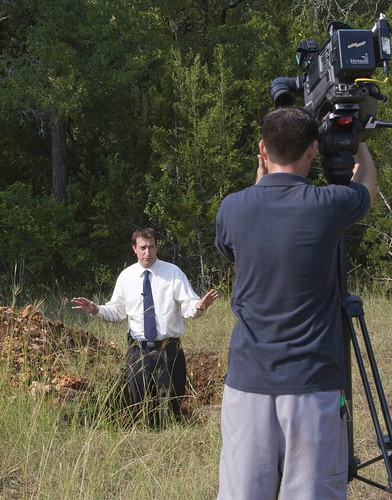
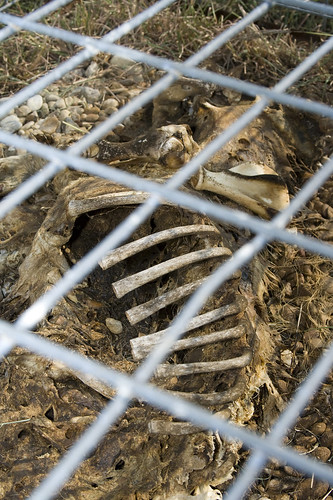
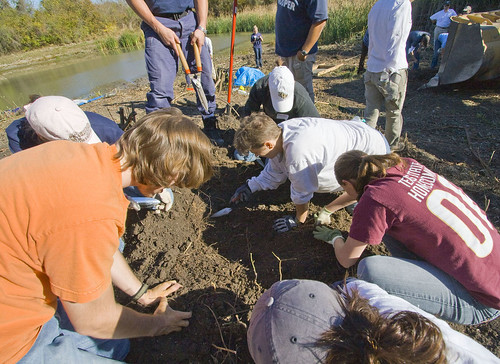

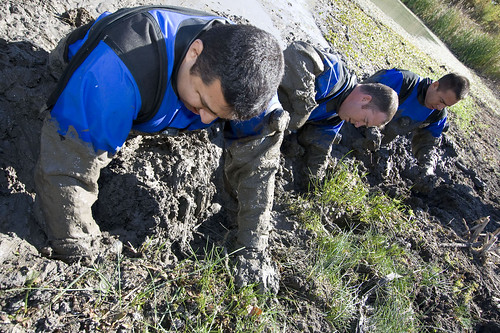
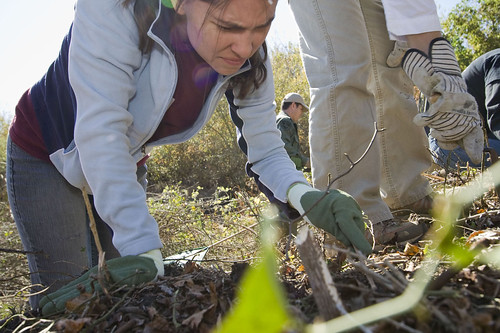

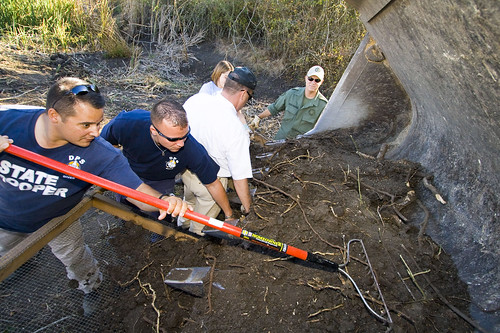

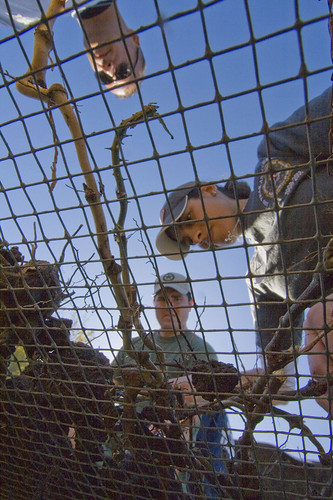


2 comments:
I was fortunate enough to visit the laboratory of Dr. William Maples at the University of Florida. He was a remarkable pioneer in the field. It was a fascinating, albeit chilling, visit.
Dave, that's fascinating. Bill Bass came down from Tennessee for the Center's ribbon-cutting. He and Melbye had worked together in the past, and he'd trained/taught most of the other forensic anthropologists on our staff. His slide show was... explicit, to say the least.
He also pointed out that 30 years ago, his graduate students were 100 percent male. Now they're 90 percent female. Amazing the power of Hollywood.
Post a Comment